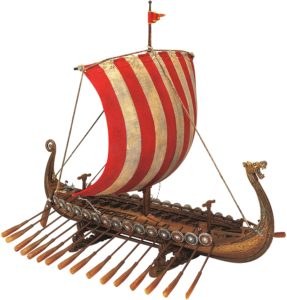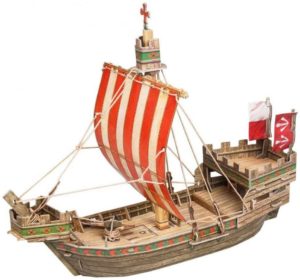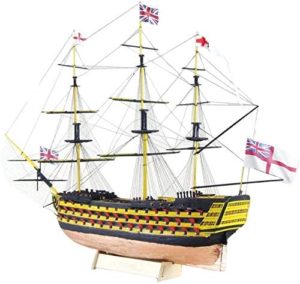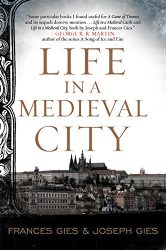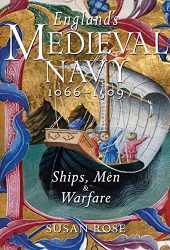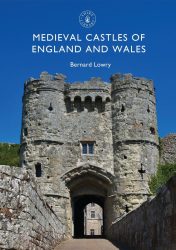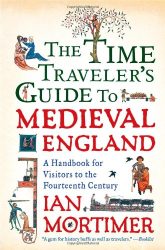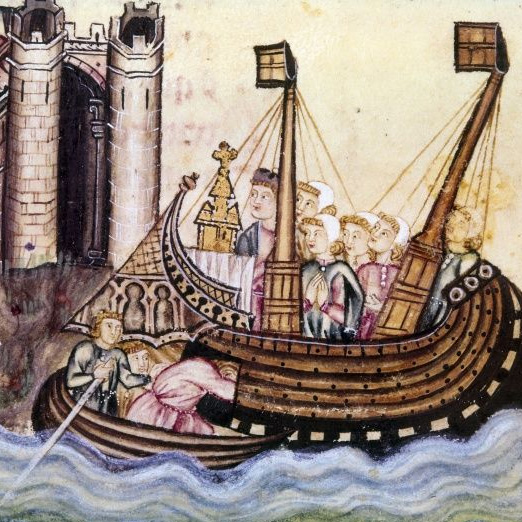
Shipwrights were skilled specialists in charge of designing and building boats and vessels. They had to have specialized knowledge such as mathematics, science and design, and were highly skilled craftsmen.
Shipwrights were in demand throughout the Middle Ages and gained more and more respect as their creations helped win wars and conquer new territories. This was a highly lucrative and respected medieval profession.
Medieval ships had two main influences: Mediterranean vessels, and Northern European longships. We will see how each one influenced shipmaking in Britain.
Ancient Shipmakers
The earliest ship builders were Egyptian – as we can tell by pictures of long, narrow boats painted on vases and graves. These boats were made of papyrus reeds and were rowed using paddles. They were of course not the first ones made (the credit goes to fallen and hollowed-out logs!) but are the first documented.
Phoenicians and Greeks were excellent boat builders too. Between 1200 and 900 BC, their impressive galleys were used for trading and as warships. These were powered by rowers sitting in one, two or three lines. These galleys visited Britain a long time ago, looking for tin around Cornwall.
The ancient Chinese also built vessels in the Greco-Roman tradition of the trireme. In the 1st century, Malay and Javanese people used large seafaring ships with two types of sails. These were so large they could carry enough provisions for a year!
Medieval European Shipmaking
Frankish and Anglo-Saxon nautical practice was extremely accomplished. Until recently, it was believed that Viking Longships were an advance on traditional clinker-built hulls of plank boards. Sometime around the 12th century, northern European ships began to be constructed using a straight sternpost. This allowed for the mounting of a rudder, which was more durable than a steering oar.
The middle ages favoured “round ships”, heavily curved at both ends. Galleys were also important, constructed with both oars and sails.
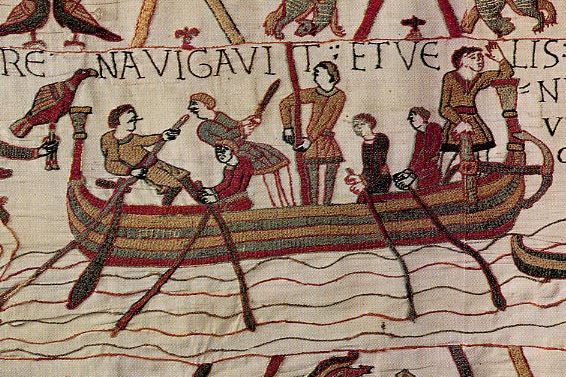
Medieval Ships: The Mediterranean Influence
Medieval European shipwrights had received two broad ranges of wooden shipbuilding traditions from their predecessors. One was the Mediterranean or Roman. The other, the Northern European.
Roman shipbuilders created vessels with extremely strong hulls, because they passed wooden nails though planks and tendons on all parts of the ships. The internal framing was minimal, and the hull was heavy, sturdy and waterproof. Propulsion came usually from a single square sail near the middle of the ship. Roman ships were round ships or galleys.
During the Middle Ages, Mediterranean-style ships went through several changes. As the supply of skilled labour got reduced, the distance between mortise and tenon joints decreased. Planks became pinned to internal frames. This led to a new form of construction: The integrity of the vessel was transferred from the external hull to the internal frame. The ribs were built first, and the hull planks added later.
This meant that the internal frame design became more important, and with it the status of the designer. This “skeleton-first” construction was lighter and easier to build, and used less wood – but it also required more maintenance.
Medieval Ships: The Northern European Influence
In the Early Middle Ages, shipbuilders from the Baltic and North Seas converged in producing a type of rowing barge with overlapping planking. For the purpose of keeping them in place, builders turned to using wooden nails and/or iron rivets.
These ships didn’t need strong internal ribs, and over time began using shorter planks pieced together to provide more flexibility to the hull. Many called the Scandinavian version of this ship the “Viking ship”. Of it, two versions were popular: One was low and fitted with a mast that could be taken down and oars. The other had a fixed mast. Both vessels were effective for cargo, military transport, and as a warship.
The Evolution of Medieval Ships
These two mentioned traditions (the Mediterranean and the Northern European) remained relatively isolated until the 13th century. Shipwrights added a second mast near the stern and then a third around the 14th century. They changed the sails to a triangular shape. The full-rigged ship came to dominate, especially for longer distances (for exploration and and for trading).
The First Shipbuilding Treatise
The first treatise on shipbuilding was written around 1436. The author is a man who had began his career as a Venetian galley oarsman, Michael of Rhodes. As he worked his way up into officer positions, sailing on over 40 voyages and taking part in major sea battles, he wrote and illustrated several manuscripts on mathematics, astrology, and shipbuilding.
Michael of Rhodes’ treaty includes more than 200 pages of commercial and calendrical computations. He covers three types of galleys and two of round ships. This wonderful book is one of the earliest surviving portolan aids to navigation. Though Michael was not a shipbuilder, he had to know a great deal about the dimensions and characteristics of the ship.
Types of Medieval Sailing Ships
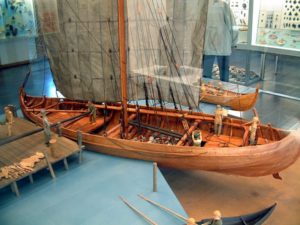
Knarr
The knarr is a type of cargo vessel used by the Vikings. Although related, it differed from the longship in that it was larger and relied almost entirely on a square-rigged sail for propulsion.
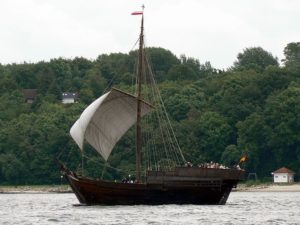
Cog
Cogs are vessels with a single mast and built with steep sides and a flat bottom. It seems to have evolved on the Frisian coast during the 14th century. Cogs progressively replaced Viking-type ships in Northern waters during the 13th century.
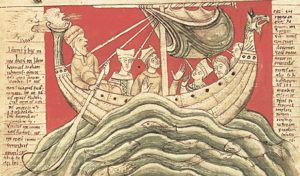
Hulk
The hulk is first recorded in the 10th century. Although clinker-built, their distinguishing feature was that they had no stem or stern posts or deep keel, being flat-bottomed like a cog. Mostly associated with the Blatic and Hanseatic League, hulks continued to be mentioned in use throughout the Middle Ages and into the 16th century.
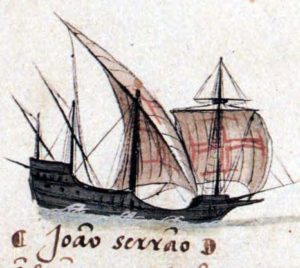
Caravel
The caravel was developed by the Portuguese and used from the 15th century on, mostly for oceanic exploration voyages along the West African coast and into the Atlantic Ocean. It could be either square rigged and lateen rigged (Caravela Redonda) or only lateen rigged (Caravela Latina). Due to its lighter weight and thus greater speed, the caravel was a boon to sailors.
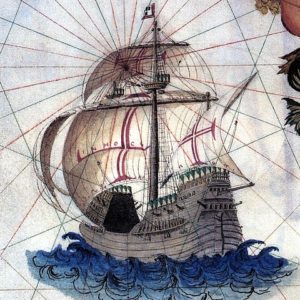
Carrack
The carrack is a very large vessel invented in southern Europe in the 15th century. Columbus’s ship, the Santa María was a carrack. Carracks are large enough to be stable in heavy seas, and capacious enough to carry a large cargo and provisions for very long voyages.
Types of Medieval Oared Ships
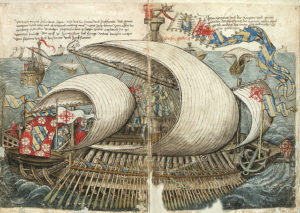
Galley
Galleys were used for trade and warfare since at least the 8th century BC. Their primary method of propulsion was rowing, which was well-suited for often-fickle winds of the Mediterranean where they were primarily used. Italian city-states like Venice constructed ships like the galley after the Crusades.
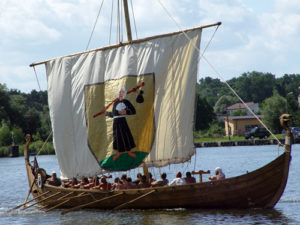
Longship
The longship is a type of ship developed over a period of centuries and perfected by the Vikings in approximately the 9th century. The ships were clinker-built, utilizing overlapping wooden strakes.
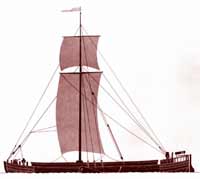
Balinger
The balinger is a clinker-built oared vessel with one or two masts. They were usually small, of 40–60 long tons (45–67 short tons; 41–61 t). Balingers were popular in the Bay of Biscay and English Channel and were used both for trade and warfare.
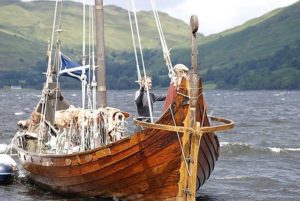
Birlinn
Between 1263 and 1500, the Lords of the Isles used birlinns for warfare and for transport around their maritime domain (the west coast of the Scottish Highlands, the Hebrides, and Antrim). These ships were used for sea-battles and for attacking castles or forts built close to the sea.
Medieval Ships: Gift Ideas
Books about Medieval Ships and Life
More Medieval Occupations

Medieval Minstrel
Medieval minstrels sang, played musical instruments, and told engaging stories. Here’s what life was like for a minstrel in the Middle Ages.
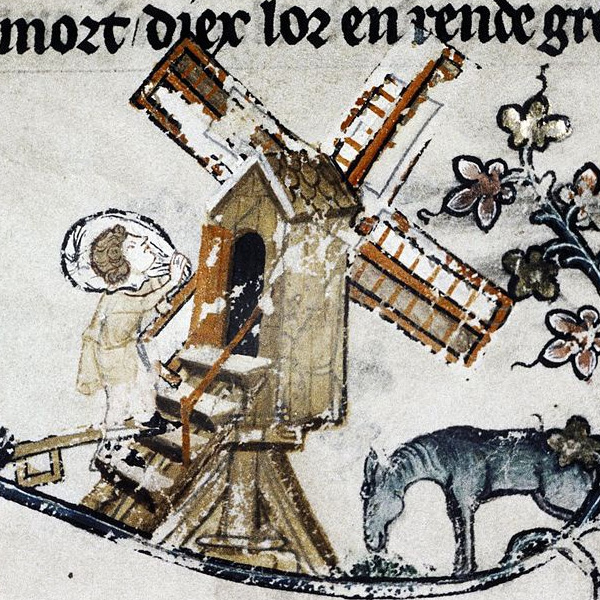
Medieval Miller
Millers were some of the most important tradesmen in the Middle Ages. Learn more about this medieval profession and how millers lived.
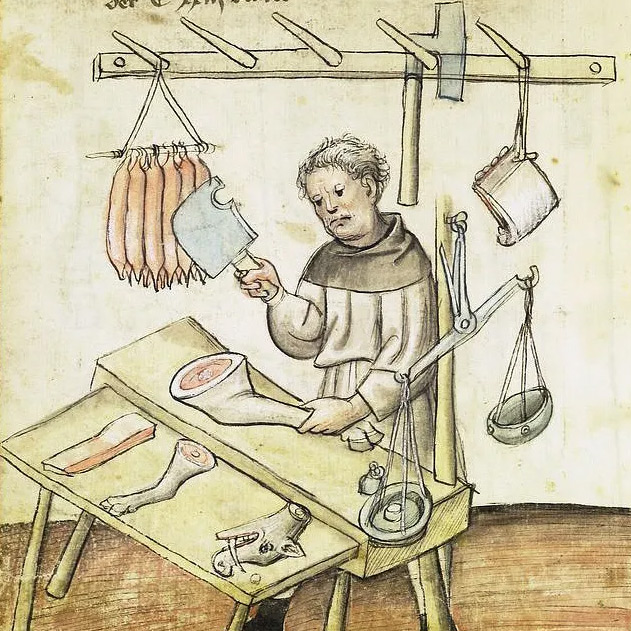
Medieval Butcher
Middle Ages butchers prepared meat, fish, and fowl for the people in a castle or a city. They sometimes had stalls in a marketplace.
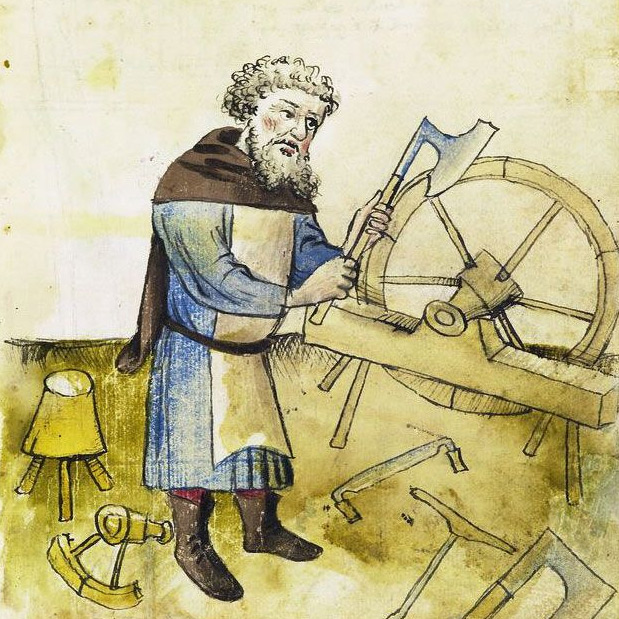
Medieval Wheelwright
Medieval candlemakers made candles from materials such as fat, tallow and beeswax.

Medieval Shoemaker
Medieval candlemakers made candles from materials such as fat, tallow and beeswax.
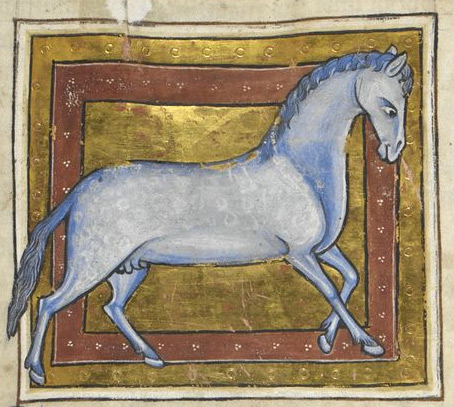
Medieval Stable Master and Grooms
Medieval Stable Master and Grooms were responsible for horses and stables.

